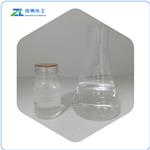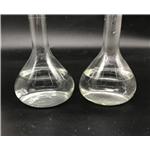α-Linolenic acid ethyl ester is an esterified form of α-linolenic acid (Item Nos. 90210 | 21910). It increases cyclin E levels and the activity of Cdk2/cyclin E, ERK, and JNK in hepatic stellate cells when used at a concentration of 50 μM. α-Linolenic acid ethyl ester (25 μg/ml) inhibits the growth of S. mutans, C. albicans, and P. gingivalis by 98, 72, and 92%, respectively, in vitro. It has been found in biodiesel produced from castor oil using ethanol. α-Linolenic acid ethyl ester has been used as a substrate in lipid peroxidation assays for antioxidant activity.
ethyl linolenate is an emollient reportedly used in indoor tanning preparations. It is not very popular as it may pose rancidity problems. It may also be used as an ingredient to enhance the fragrance of a product.
An exogenous source of α-linolenic acid.
Linolenic Acid Ethyl Ester is the ethyl ester derivative of Linolenic Acid (L467650); an essential fatty acid that occurs mostly as the glyceride in most drying oils. Also a nutrient.
ChEBI: A long-chain fatty acid ethyl ester resulting from the formal condensation of the carboxy group of linolenic acid with the hydroxy group of ethanol.
LINOLENIC ACID ETHYL ESTER is an ester. Esters react with acids to liberate heat along with alcohols and acids. Strong oxidizing acids may cause a vigorous reaction that is sufficiently exothermic to ignite the reaction products. Heat is also generated by the interaction of esters with caustic solutions. Flammable hydrogen is generated by mixing esters with alkali metals and hydrides. LINOLENIC ACID ETHYL ESTER is sensitive to light. LINOLENIC ACID ETHYL ESTER is incompatible with strong oxidizers, strong acids and strong bases.
LINOLENIC ACID ETHYL ESTER is probably combustible.
Ethyl linolenate may be used as a reference molecule in systems developed to measure fatty acid esters derived from tissues, membranes and lipids, especially associated with alcohol abuse. Ethyl linolenate is being studied as a possible skin whitening agent with anti-melanogenesis activity.



